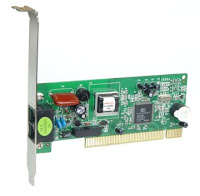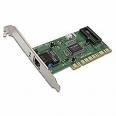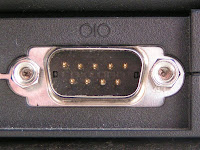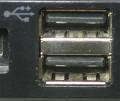Sockets
 Sockets is a method for communication between a client program and a server program in a network. A socket is defined as "the endpoint in a connection." Sockets are created and used with a set of programming requests or "function calls" sometimes called the sockets application programming interface (API). The most common sockets API is the Berkeley Unix C interface for sockets. Sockets can also be used for communication between processes within the same computer.
Sockets is a method for communication between a client program and a server program in a network. A socket is defined as "the endpoint in a connection." Sockets are created and used with a set of programming requests or "function calls" sometimes called the sockets application programming interface (API). The most common sockets API is the Berkeley Unix C interface for sockets. Sockets can also be used for communication between processes within the same computer.

 An opening in a computer where you can insert a printed circuit board. Slots are often called expansion slots because they allow you to expand the capabilities of a computer. The boards you insert in expansion slots are called expansion boards or add-on boards.
An opening in a computer where you can insert a printed circuit board. Slots are often called expansion slots because they allow you to expand the capabilities of a computer. The boards you insert in expansion slots are called expansion boards or add-on boards.





 Used to connect mouse, keyboards, modem and many others to the system unit. It transfers data in sequence and it is good for long distance usage.
Used to connect mouse, keyboards, modem and many others to the system unit. It transfers data in sequence and it is good for long distance usage.


 Sockets is a method for communication between a client program and a server program in a network. A socket is defined as "the endpoint in a connection." Sockets are created and used with a set of programming requests or "function calls" sometimes called the sockets application programming interface (API). The most common sockets API is the Berkeley Unix C interface for sockets. Sockets can also be used for communication between processes within the same computer.
Sockets is a method for communication between a client program and a server program in a network. A socket is defined as "the endpoint in a connection." Sockets are created and used with a set of programming requests or "function calls" sometimes called the sockets application programming interface (API). The most common sockets API is the Berkeley Unix C interface for sockets. Sockets can also be used for communication between processes within the same computer. Chips

french fries: strips of potato fried in deep fat
Slots
 An opening in a computer where you can insert a printed circuit board. Slots are often called expansion slots because they allow you to expand the capabilities of a computer. The boards you insert in expansion slots are called expansion boards or add-on boards.
An opening in a computer where you can insert a printed circuit board. Slots are often called expansion slots because they allow you to expand the capabilities of a computer. The boards you insert in expansion slots are called expansion boards or add-on boards.Graphics Card

An expansion card that interprets drawing instructions sent by the CPU, processes them via a dedicated graphics processor and writes the resulting frame data to the frame buffer. Also called video adapter (the term "graphics accelerator" is no longer in use).
Sound Card

An expansion board that enables a computer to manipulate and output sounds. Sound cards are necessary for nearly all CD-ROMs and have become commonplace on modern personal computers. Sound cards enable the computer to output sound through speakers connected to the board, to record sound input from a microphone connected to the computer, and manipulate sound stored on a disk.
Modem Card

A modem card allows users to connect to the Internet using a network. It is designed to work in laptops or desktops. A modem card can be wireless, or it can be installed inside of a user's PC. Most manufacturers provide installation guides and technical support with their modem cards, rendering them quite easy to use.
Network Interface Card

A network interface card (NIC) is a computer circuit board or card that is installed in a computer so that it can be connected to a network. Personal computers and workstations on a local area network (LAN) typically contain a network interface card specifically designed for the LAN transmission technology, such as Ethernet or Token Ring. Network interface cards provide a dedicated, full-time connection to a network. Most home and portable computers connect to the Internet through as-needed dial-up connection. The modem provides the connection interface to the Internet service provider.
PLug and Play

Plug and Play, sometimes, abbreviated PnP, is a catchy phrase used to describe devices that work with a computer system as soon as they are connected. The user does not have to manually install drivers for the device or even tell the computer that a new device has been added. Instead the computer automatically recognizes the device, loads new drivers for the hardware if needed, and begins to work with the newly connected device.
serial port
 Used to connect mouse, keyboards, modem and many others to the system unit. It transfers data in sequence and it is good for long distance usage.
Used to connect mouse, keyboards, modem and many others to the system unit. It transfers data in sequence and it is good for long distance usage.Parallel port

Used to connect external devices that needs to transfer data over a short distance. Printers use parallel ports.
Universal serial bus port

also known as USB port, it can be used to connect several devices at once.
Firewire port

provide connections for sepcialised firewire devices.
No comments:
Post a Comment